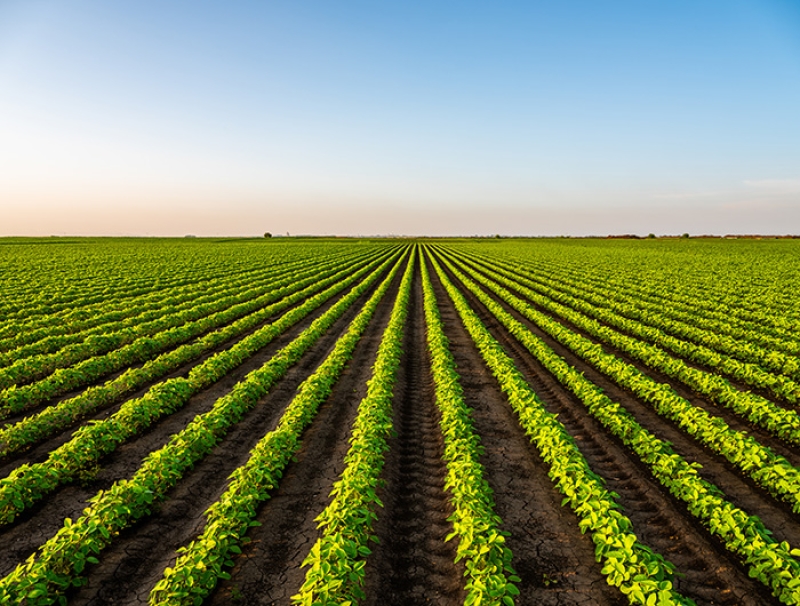Lawmakers in Congress introduced the SNAP Nutrition Security Act, a bill that would establish metrics and reporting for assessing SNAP’s impact on nutrition security and food security. The bill strengthens the evidence base for a stronger SNAP program. It does not change what SNAP shoppers can buy. Learn why this legislation is critical for improving access to a healthy diet.
What is the Nutrition Security Act?
The Farm Bill is a sweeping piece of legislation that funds a wide range of food and agricultural programs, including the Supplemental Nutrition Assistance Program (SNAP). Congress passes a new Farm Bill approximately every five years, providing policymakers with a chance to strengthen critical food and farm programs. The upcoming Farm Bill is a critical opportunity for Congress to address long-standing inequities in access to healthy food, strengthen our food system, and decrease diet-related disease, thereby lowering the burden of healthcare costs.

Nemanja Otic – stock.adobe.com.
Lawmakers in Congress have introduced legislation that would require the USDA to establish metrics for assessing SNAP’s impact on nutrition security, food security, and diet quality. The SNAP Nutrition Security Act of 2023 (S.2326/H.R.4909) has bipartisan, bicameral support and is sponsored by Sen. Cory Booker (D-NJ) and Sen. Marco Rubio (R-FL) in the Senate and Rep. Josh Gottheimer (D-NJ-05) and Rep. Lori Chavez-DeRemer (R-OR-05) in the House.
The legislation would codify definitions for food security, nutrition security, and diet quality and require that the USDA measure and report annually on nutrition security and diet quality among SNAP participants, just as the agency currently does for food security. It would also require state SNAP-Ed agencies to generate recommendations on ways to increase food and nutrition security and diet quality. Further, the bill would have the USDA collect and report every four years on national and state-level sales data of product types purchased through SNAP, aggregated and de-identified. Finally, the legislation would add to Congress’ declaration of policy for SNAP the goal of improving food security, nutrition security, and diet quality.

Katherine Welles – stock.adobe.com.
It is important to note that the SNAP Nutrition Security Act would not change or restrict which products SNAP participants can buy under the program or alter benefit levels in any way. The bill is a way to better measure nutrition outcomes and food purchasing behavior of the roughly one in eight US residents accessing SNAP, with the goal of providing data to improve health outcomes. Knowing what type of food is being purchased will help measure food and nutrition security more accurately than self-reported data and will inform future strategies to strengthen SNAP.
Read more: The SNAP Nutrition Security Act of 2023
SNAP Nutrition Security Act: Congressional offices’ one-page summary
How the SNAP Nutrition Security Act could improve health
SNAP is a powerful safety net program that has many positive public health impacts for the millions of children, adults, seniors, and people with disabilities who participate. The program provides financial benefits via an electronic benefit transfer (EBT) card, which participants can use to buy groceries—in-store and online—at more than 250,000 retailers nationwide. SNAP is the nation’s largest federally funded nutrition assistance program and the first line of defense against food insecurity, a proxy for hunger. However, across the board individuals and families with lower incomes face systemic and structural barriers that can decrease their ability to access nutritious foods.

Odua Images – stock.adobe.com.
Although we know SNAP is effective at reducing poverty and food insecurity, we currently lack sufficient data to measure how SNAP affects participants’ access to and consumption of nutritious foods. While the USDA has a working definition of nutrition security, the agency does not yet have a formal definition or metrics for assessing nutrition security. Thus, the agency is not able to evaluate the role of SNAP in mitigating diet-related disease disparities through improved nutrition security.
The SNAP Nutrition Security Act would provide a more complete understanding of how SNAP impacts nutrition security. This in turn could help strengthen the case for programs like the Gus Schumacher Nutrition Incentive Program (GusNIP), a federal program designed to increase access to healthy food for individuals participating in SNAP through financial incentives for purchases of fruits and vegetables.
SNAP Nutrition Security Act: Organizational sign-on letter
List of organizations endorsing the SNAP Nutrition Security Act
- American Heart Association;
- Action for Healthy Kids;
- Association of State Public Health Nutritionists;
- Balanced;
- Bipartisan Policy Center;
- Center for Science in the Public Interest;
- ChangeLab Solutions;
- Colorado Children’s Campaign;
- Good Measures;
- Hunger Free America;
- International Fresh Produce Association;
- José Andrés, Chef and Founder of the Global Food Institute at George Washington University;
- Jump IN for Healthy Kids;
- Mission: Readiness;
- National Association of Councils on Developmental Disabilities;
- Nemours Children’s Health;
- Tthe Nutrition Policy Initiative at Tufts University;
- Partnership for a Healthier America;
- Real Food for Kids;
- Rudd Center for Food Policy and Health at the University of Connecticut;
- Society of Behavioral Medicine;
- The Center for Black Health Equity
How you can help
CSPI is working to protect SNAP and strengthen the public health impacts of the program, including by calling on policymakers to protect and strengthen benefit levels, reduce barriers to access, strengthen nutrition incentives, and create healthier retail food environments. You can support our work today.
